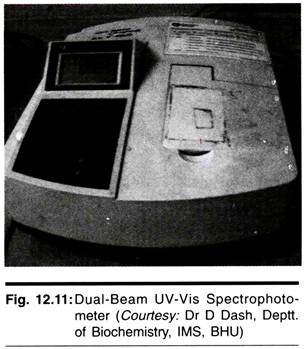In this article we will discuss about the regulation of PTH and calcitonin secretion.
Decrease in plasma calcium level increases PTH secretion and when plasma calcium level increases, there will be increased secretion of calcitonin. (Fig. 6.52)
Apart from the plasma calcium level, some of the other factors which can affect the secretion of PTH are:
i. Decreased plasma magnesium level.
ii. Increased plasma phosphate level
iii. 1, 25-DHCC inhibits the PTH secretion.
Hyperparathyroidism:
In primary hyperparathyroidism, increased secretion of PTH is associated with hypercalcemia and hypophosphatemia. This results in decreased excitability of neuromuscular tissue. Associated with this will be pathological fractures, osteoporosis, removal of calcium from gingival margin, formation of renal stones, and deposition of calcium in the soft tissues and along the blood vessels.
Secondary hyperparathyroidism is due to chronic renal diseases associated with excessive calcium loss. Decreased calcium level in plasma stimulates excessive secretion of PTH.
Hyperparathyroidism:
i. Osteitis fibrosa cystica
ii. Hypercalciuria
iii. Renal stones
iv. Hypercalcemia
v. Hypophosphatemia
vi. Demineralization of bones
Details of primary and secondary hyper- and hypoparathyroidism including pseudohypoparathyroidism features and symptoms have been enumerated in Table 60.17.
Hypoparathyroidism:
Hypoparathyroidism is due to inadvertent removal of parathyroid glands during thyroidectomy. In rats, removal of the parathyroid glands will result in death of the rats in about 8 hrs. In the case of human beings, there will be hypocalcemic tetany.
Tetany is of two types, namely:
i. Overt tetany and
ii. Latent tetany.
In latent tetany, the clinical manifestations of tetany are not obvious, but may be brought out by hyperventilating the lungs. Hyperventilation leads to carbon dioxide washout and this leads to alkalosis (washing out of hydrogen ions from the body). This results into decreased ionic calcium level in plasma.
In latent tetany, mild tapping on the facial nerve at the angle of jaw, leads to contraction of ipsilateral facial muscles. This sign is known as Chvostek’s sign. Carpopedal spasm can be produced by applying a BP cuff around the upper arm and increasing the pressure in the cuff. Increasing the pressure in the cuff obstructs the blood flow to the forearm. This sign is known as Trousseau’s sign.
Hypoparathyroidism (tetany):
Characterized by increased neuromuscular excitability
i. Latent-signs and symptoms and not present.
ii. Overt – signs and symptoms-seen Chvostek’s sign, Trousseau’s sign.
iii. Tendency towards tetany.
In overt tetany, there will be marked increase of neuromuscular excitability with twitching, tonic and clonic contractions of muscle fibers. Contraction of laryngeal muscles will give rise to asphyxia and death.
Features of hypocalcemic tetany are:
i. Numbness—tingling of the extremities (paresthesia).
ii. Stiffness of hand and feet.
iii. Cramps in the extremities.
iv. Convulsions in children.
v. Chvostek’s sign
vi. Trousseau’s sign (carpopedal spasm).
vii. Laryngeal spasm.
Treatment:
When the patient arrives with overt tetany, intravenous calcium should be administered. On a long-term basis, a diet rich in calcium and vitamin D must be given.
Hypoparathyroidism:
i. Hyperexcitability of neurons—hyperreflexia
ii. Seizures
iii. Muscle cramps
iv. Tingling sensation
v. Twitching
Vitamin D Deficiency:
It could be due to:
i. Inadequate sunlight.
ii. Inadequate dietary sources of vitamin D.
iii. Elderly institutionalized individuals (lead to osteomalacia).
iv. Preterm infants who are in air polluted cities and are breastfed.
Results in rickets characterized by bone deformation.
Excess of vitamin D could be due to over absorption from GI tract.
In this condition:
i. Increased bone resorption.
ii. Hypercalcemia.
iii. Hypercalciuria.
iv. Renal stones.
v. Deposition of calcium in soft tissues.
Osteoporosis could be due to:
i. Calcium deficiency.
ii. Loss of mechanical stress.
iii. Space flight.
iv. Increased levels of PTH and 1, 25-DHCC.
Factors leading to osteoporosis are:
i. Aging
ii. Menopause
iii. Other risk factors
The above problem leads to low bone density and effect is fractures.
Causes of osteomalacia and rickets:
Inadequate availability of vitamin D:
i. Dietary deficiency or lack of exposure to sunlight.
ii. Fat-soluble vitamin malabsorption.
Defects in metabolic activation of vitamin D:
i. Liver disease.
ii. Anticonvulsants.
iii. Renal failure.
iv. Hypoparathyroidism.
Impaired action of 1, 25-DHCC occurs:
i. When patient is on anticonvulsants therapy for prolonged duration.
ii. Receptor defects for vitamin D.


